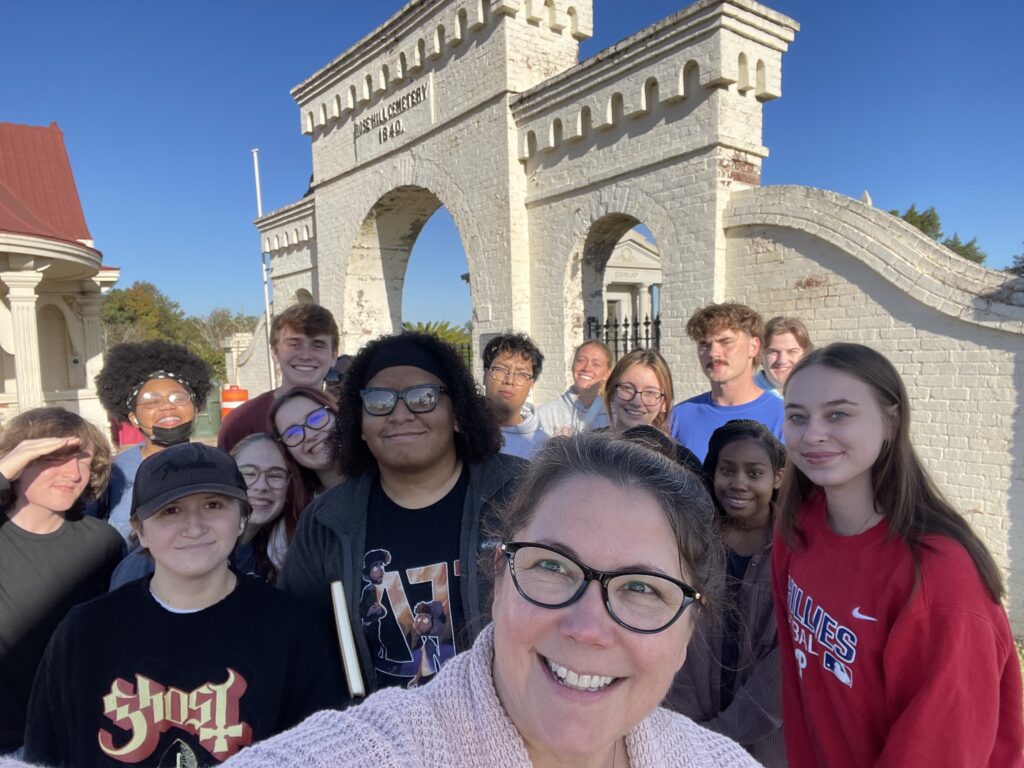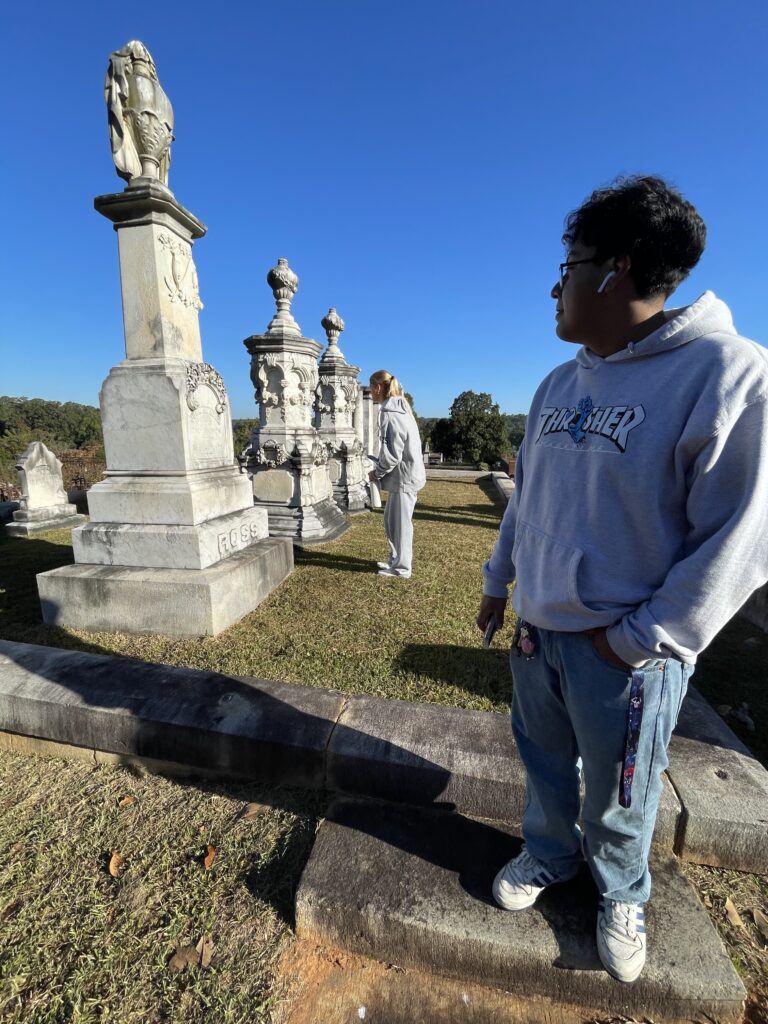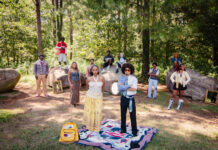
Sitting on the surface of a marbled café table at Sweet Eleanor’s in downtown Macon on a fall Friday afternoon is a slice of cheesecake, a plastic coffee cup — and a full set of watercolor paints and brushes, as one Mercer University student tries to capture the moment. Nearby, a number of fine line pens are scattered around the coffee bar as another student hopes to capture the pendant light hanging from the ceiling while Associate Professor Eric O’Dell looks on.
“I don’t know if I remember when I first started bringing my classes downtown,” he said. “I’ve had my studio down here for over 30 years, practically since I was at Mercer. There’s a kind of energy from being in the bustle of the real world, that can’t be captured the same way in the classroom.”
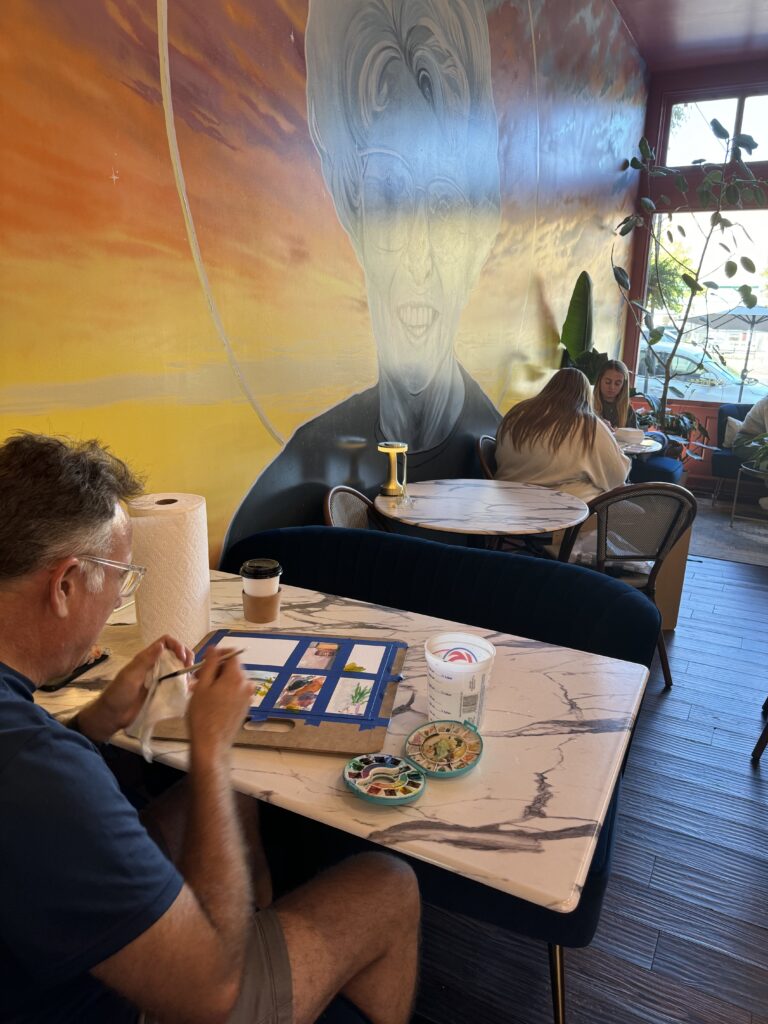
O’Dell believes this gives students a fresh sense of inspiration for their work. He often brings his painting class off campus to encounter new environments as a jumping off point for their composition.
“You can imagine a cheesecake in your mind, or look up a picture of a cheesecake on your phone, but it won’t have the little pock mark that this cheesecake has in front of you. You might not be able to envision the edges of the square plate they use at the restaurant,” he said.
Plus, O’Dell enjoys sharing the community where he lives and works with his students.
“When we come downtown, I get to answer questions about the community, and maybe talk about stereotypes they had before coming here, or point out places I’ve loved for a long time,” he said. This also provides fodder for what students mark on the page.
Other art professors take a similar approach. Professor Craig Coleman recently took his digital photography course downtown to practice night photography. Coleman said the diversity of the environment broadens students’ technique.
“The interplay of natural light, street lamps and illuminated signs presents students with the challenge of balancing different light sources and understanding how lighting transforms textures like brick, glass and concrete,” he said.
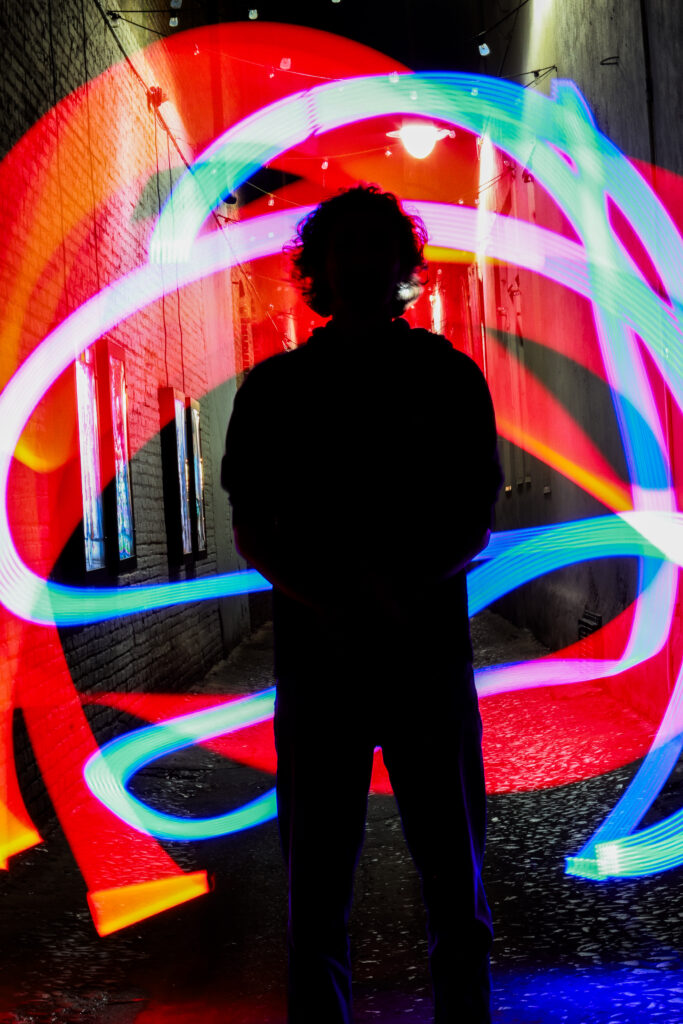
At the McEachern Art Center (MAC), Mercer’s fine art gallery on Second Street, there’s studio spaces for students to work above the exhibition area on the main floor.
“I really think it’s a beneficial place because it allows the artists to have a creative space in the heart of the city,” said Johnny Cohen, director of the MAC.
He feels the time spent off campus is most valuable for envisioning a life after college.
“It allows students to collaborate with artists that are showing work in the exhibition space, creating mentorships and future connections. They can imagine where they could potentially see their work in a professional setting,” Cohen said.
Each spring since the MAC opened in 2019, students have staged their senior exhibition there. Not only are students preparing sculptures, graphic designs and drawings to submit for the exhibition, but they also learn about marketing and curation during the process, led by Cohen. Even learning how to write the short labels placed next to their art is important, he said.
“It’s beneficial for students to go beyond their peers and see how the greater community perceives their work and whether they understand it. When they come to the MAC, they are out of their everyday bubble,” he said.
Real world settings allow students to also tackle real challenges. This semester, Professor Tennille Shuster assigned her graphic design students in a typography class to design a hypothetical poster for the Rose Hill Ramble, a seasonal event that occurs as a guided tour in Macon’s historic Rose Hill Cemetery. Shuster and her students spent a week in Rose Hill, classifying the various typefaces used throughout the cemetery. These typefaces will be incorporated into their final designs.
These are just some of the experiences a Mercer student can expect to enhance their education when studying art. Coleman said the faculty’s goal is to give students a “dynamic, immersive environment that significantly enhances their learning.”
“Downtown Macon’s aesthetic diversity — with its range of architectural styles, alleys, lights, bustling streets, brick pathways and parks — transforms the area into an open-air studio,” he said.
